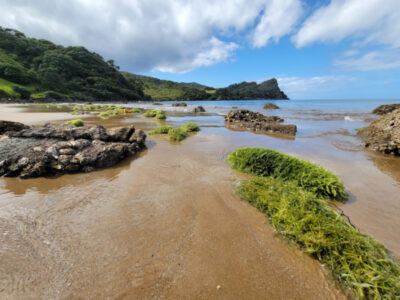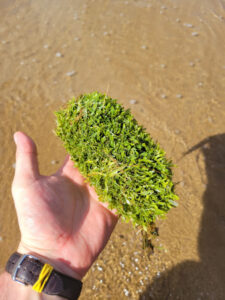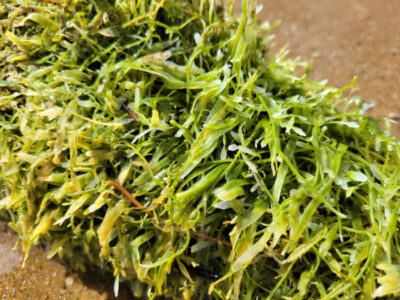
As boaties and fishers head to the waters this Auckland anniversary weekend, they’re asked to help stop the spread of a fast-growing, non-native seaweed – exotic Caulerpa – in the Hauraki Gulf.
In the right conditions, this pest can smother the ocean floor between the low-tide mark to approximately 40 metres deep – crowding out native marine life including sponges, cockles, mussels and scallops and creating a threat to commercial and recreational fishing, diving and other leisure activities.
Biosecurity New Zealand’s director of response, John Walsh, says exotic Caulerpa has been found in the waters around Aotea Great Barrier Island and Ahuahu Great Mercury Island in the Hauraki Gulf.

“At Aotea, it covers large areas of the seabed in underwater meadows as big as rugby fields,” he says.
“Water temperatures from Cape Reinga in the north down to East Cape in the south are suitable for the pest to take hold.”
Walsh says boat anchors and anchor chains pose the biggest risk of spreading exotic Caulerpa.
The seaweed can tangle in them and be carried to other waters when the vessel moves on.
“That’s why we’re urging boaties to check their anchors and chains before moving to different waters – especially if departing Aotea and Great Mercury Island, says Walsh.
“There are legal controls and a rahui restricting anchoring and some fishing activities at these islands to help stop the spread.
“However, we still need boaties to check their anchors and anchor chains for any seaweed and chuck it straight back in the water it came from before moving on.

“This applies to anybody on the water in these areas whether you are fishing, diving, sight-seeing or kayaking. Check your gear, chuck seaweed straight back, or put it in the rubbish if you find it after you’ve moved to another spot or are back on land.”
If you think you spot exotic Caulerpa, you can note its location, take a photo if possible and phone Biosecurity New Zealand on 0800 80 99 66 to report it.








